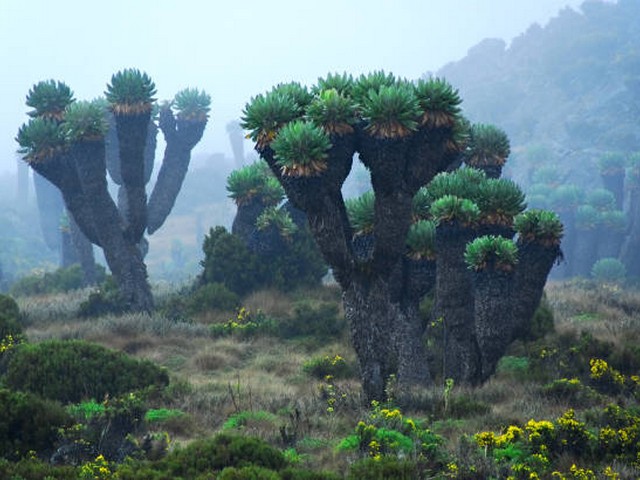Capture the Heights: Photography Workshops On Kilimanjaro Treks
Unleashing Creativity at Africa’s Roof
Imagine standing at the summit of Mount Kilimanjaro, the highest point in Africa, surrounded by a canvas of clouds and a sunrise that paints the sky in hues of oranges and pinks. Now, imagine capturing that perfect moment through your lens, securing not just a memory but a masterpiece. At the Kilimanjaro Centre for Trekking and Ecotourism (KCTE), we turn this imagination into reality with our specialized Photography Workshops on Kilimanjaro Treks. These workshops are designed for photographers of all skill levels who are eager to enhance their craft while exploring one of the world’s most stunning landscapes.
Why Choose Kilimanjaro for Your Photography Workshop?
A Natural Studio Like No Other
Kilimanjaro is not just a mountain; it’s a mosaic of ecological systems. From lush rainforests and alpine deserts to icy summits, each zone offers unique photographic elements. The diversity of flora and fauna adds vibrant layers to your shots, making Kilimanjaro a paradise for nature and landscape photographers.
Learning in the Lap of Nature
Our photography workshops integrate practical learning with adventure. Guided by professional photographers with deep experience in outdoor and landscape photography, participants gain hands-on learning in real-time scenarios. This immersive experience ensures you not only come back with striking images but also with enhanced skills.
The Golden Hours
At the altitudes of Kilimanjaro, the golden hours stretch longer, giving photographers the perfect natural lighting. The low angle of the sun creates dynamic shadows and highlights, offering endless opportunities to capture the dramatic landscapes of Kilimanjaro.
What to Expect in Our Photography Workshops
Masterclasses On-The-Go
As you trek through the various climatic zones, daily masterclasses cover essential techniques such as long exposure, wildlife photography, landscape compositions, and handling natural lighting. These sessions are tailored to make use of the day’s location, providing context-specific learning.
Professional Mentoring
Our photography mentors are not only experts in their craft but also seasoned trekkers. Their dual expertise ensures that you learn the best photographic techniques while also receiving tips on acclimatization and mountain safety.
Peer Learning
Being part of a group of photography enthusiasts means you get to share knowledge, critique each other’s work, and enjoy the camaraderie that only comes when people with shared passions unite.
Itinerary Highlights
Our photography treks are carefully scheduled to maximize photographic opportunities. Key highlights include:
- Day 1-3: Rainforest and Fauna – Capture the lush greenery and endemic wildlife like the Kilimanjaro Colobus monkeys.
- Day 4-5: Moorland and Alpine Desert – Focus on vast landscapes with giant lobelias and surreal terrain.
- Day 6-7: Summit Approach – Photograph the stunning glaciers and the star-studded sky at night.
- Day 8: Summit Day – Conquer Uhuru Peak and celebrate with sunrise photography from the top of Africa.
Gearing Up for the Trek
What to Bring
A detailed packing list is provided upon booking, but key items include a sturdy tripod, multiple lenses for versatility (wide-angle and zoom), spare batteries, and protective gear for your equipment. Remember, the mountain’s weather can be unpredictable, so waterproof covers are essential.
Physical Preparedness
While the focus is on photography, trekkers need to be physically prepared for the demanding climb. We recommend a fitness regime starting at least two months before the trek.
Transformative Experiences
This trek isn’t just about improving your photography skills or adding spectacular images to your portfolio. It’s about experiencing the transformative power of nature, challenging oneself, and achieving something extraordinary. It is a journey that changes how you see the world and yourself.
FAQs About Photography Workshops on Kilimanjaro
Q1: Do I need professional photography experience to join?
No, our workshops are designed for all skill levels. Our experts tailor their mentoring to fit each participant’s experience.
Q2: How large are the photography groups?
We keep our groups small, usually between 6-10 participants, to ensure personalized attention and better mobility on the mountain.
Q3: What is the best time of year for photography on Kilimanjaro?
While Kilimanjaro is majestic year-round, the best times for photography are from January to March and from June to October, when the skies are clearest.
Q4: Are there any age restrictions for joining the photography trek?
Participants must be at least 18 years old and in good health. There is no upper age limit, but all trekkers should have their health assessed before undertaking the climb.
Q5: What are the accommodation arrangements?
Accommodations vary from campsites to huts depending on the chosen route. All options are equipped to provide comfort against the mountain’s harsh conditions.
Ready to Capture the Majesty of Kilimanjaro?
Booking your spot in a Photography Workshop on Kilimanjaro Treks with Kilimanjaro Centre for Trekking and Ecotourism (KCTE) is more than just signing up for a trip; it’s embarking on a journey of artistic and personal growth. Spaces are limited, as we strive to keep our groups intimate for the best experience. Don’t miss this unique opportunity to enhance your photographic skills amidst some of the most spectacular scenery on earth. Contact us today to secure your place, and get ready to capture the soul of Kilimanjaro through your lens!
Embrace the challenge, join the adventure, and let’s make art at the summit of Africa!




